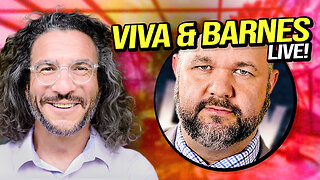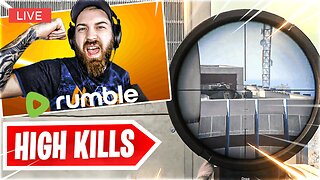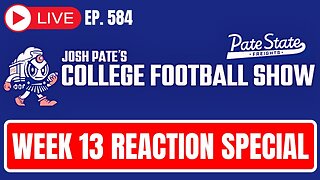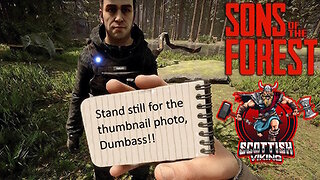Premium Only Content

My 5 Favorite Ulnar Nerve Stretches - That Won't Hurt You
In this video we go over the 5 best Ulnar Nerve Stretches that don't have a high risk associated with them. Some ulnar nerve stretches can create more pain and numbness if you do them wrong. If you want more information about ulnar nerve recovery check out my ebook which covers, treatments, diagnosis, areas of entrapments, and mistakes. Go here: https://bit.ly/3hTNLlD
UPDATED VERSION OF THIS VIDEO: https://youtu.be/JWeP92auocE
If you would like some treatment call our office in Costa Mesa CA. We have virtual sessions as 714-502-4243 www.p2sportscare.com
CHAPTER 1: INTRODUCTION TO TREATING HAND NUMBNESS
Well, sorting through the treatment of hand numbness is a process, but that’s because of the variety of potential underlying causes for it which we have to review.
In this chapter, you’ll learn about the theory of how to comprehensively rehab and treat the symptoms of an ulnar nerve compression. HINT: This is the most important part for you to read.
Treatment of the ulnar nerve can be broken down into five parts:
Find the site of compression
Decrease local irritation (passively or actively)
Decrease activity creating compression (until under control)
Increase nerve’s ability to slide through
Improve postural control, breathing patterns, movement patterns, etc.
This will be worth your time. It’s only a 5 minute section before we go into the stretch and passive care you came to see.
1. Find the site of compression
Think of a nerve as a garden hose. Any kink in the hose will affect the water flow, regardless of its location. When considering ulnar nerve compression, it works much like the garden hose, but there are a few sites on the nerve that have high probability of becoming entrapped:
At the spine (the nerve root)
At the brachial plexus (the neck region)
At the brachial sleeve (the arm)
At the cubital tunnel (the elbow)
Within the forearm muscles
At the Tunnel of Guyon (the wrist)
There are also a few other underlying problems that can trigger “symptoms of an ulnar nerve compression.” Be warned, most of these are probably going to scare you; so seeing a doctor to confirm your specific cause is good prevention of unnecessary panic attacks.
I once had a patient experiencing numbness/pain in the ring and pinky fingers at night. In his case, the cause was a tumor in his spine.
Another young man came in and presented with bilateral (both sides) numbness and pain in his hands/fingers. This is one of the major signs (bilateral symptoms) of spinal cord compression.
The individuals involved in these cases both asked, “Hey, can you just treat it?” Of course, my answer was no. Cases like both of these must be referred out for further evaluation, treatment and care.
It’s sad and scary to hear horror stories like these, but the great news is if they are found early, then they can be corrected to some degree. Ignorance is only bliss for a period of time.
Moral of this story: you should know, with certainty, what is creating your symptoms. If you don’t, the muscles of the hand can end up wasting away, or even worse.
After we’ve screened out all the red flags, I often have my patients start to examine what changes their symptoms. To do this, I’ll have them keep all variables constant and only move ONE body region to a new position and hold it.
From center, does a tilt of the head to the opposite side increase or decrease symptoms?
From center, does dropping the chin to the chest change it?
How about a shoulder shrug?
Do you see what’s going on here? We are localizing the area that has the greatest effect on the hand numbness. Everyone is different, and sometimes it’s not a position change, but rather a “stiffening” of a region. We will get more into stabilization in the eBook.
2. Decrease local irritation
Decreasing irritation of the region of nerve compression can be helpful in decreasing “flare-ups.”
In most cases, people are pretty aware of what activities or motions will trigger their symptoms. I’m never one to encourage a mindset of “avoidance,” but in this case, while we attempt to fully address the reason for the nerve compression, holding off on those activities or motions might be a good idea.
If you’re thinking something along the lines of, “It happens when I drive. How can I not drive?” or some other activity that seems unlikely for you to stop entirely, then a little more effort is going to be necessary from you!
I strongly encourage my patients to break down every activity into its separate movements or components, and to find the EXACT reason for the flare-up. The more time we can get the nerve to “breathe freely”, the less inflammed it will be. It’s not always avoidance of an activity… most of the time it’s a simple modification.
#FavoriteUlnarNerveStretches #ulnarnervestretch #california
-
 2:10:14
2:10:14
vivafrei
10 hours agoEp. 237: More Trump Cabinet Picks! MAHA or Slap in the Face? Canada on Fire! Go Woke Go Broke & MORE
74.2K101 -
 LIVE
LIVE
SOLTEKGG
17 minutes ago🟢 First Day on RUMBLE!
207 watching -
 LIVE
LIVE
Vigilant News Network
4 hours agoCOVID-Vaccinated Hit With Grave New Reality | Media Blackout
2,978 watching -
 LIVE
LIVE
Josh Pate's College Football Show
3 hours agoSEC Disaster Saturday | Major CFP Earthquake Coming | Officiating Is A Disaster | New Studio Debut
325 watching -
 LIVE
LIVE
Adam Does Movies
7 hours agoGladiator II Spoiler Conversation With Hack The Movies
974 watching -
 24:10
24:10
Bwian
7 hours agoI Don't Know What I'm Doing in Fortnite, But I Still Won...
241 -
 19:30
19:30
DeVory Darkins
9 hours ago $29.03 earnedJoe Rogan MOCKS The View as Bill Maher HUMILIATES Woke Scientist
63.4K98 -
 LIVE
LIVE
Scottish Viking Gaming
10 hours ago🔴LIVE | SUNDAY FUNDAY | Jump into my Sons of the Forest Game | DOO EET NOWWA!
628 watching -
 24:01
24:01
Winston Marshall
4 days agoThe TRUTH About The UK Farmer Protest What No One Is Talking About...
67.3K156 -
 3:21:56
3:21:56
Tate Speech by Andrew Tate
14 hours agoEMERGENCY MEETING EPISODE 93 - ME TOO!
248K163